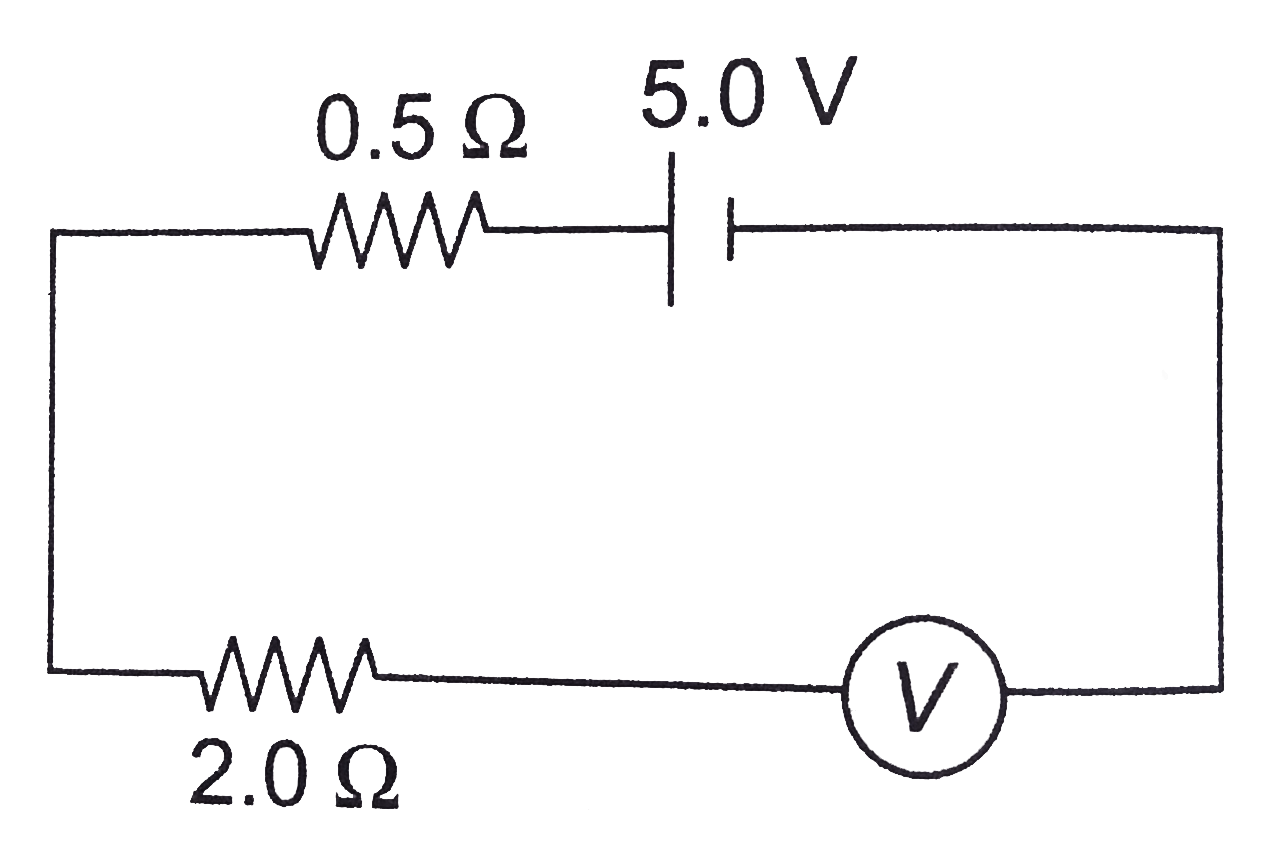A storage battery of emf 8.0 V and internal resistance 0.5Ω is being charged by a 120V dc supply using a series resistor of 15.5Ω. what in the terminal voltage of the battery during charging ? What is the purpose of having a series resistor in the charging circuit?
To solve the problem step by step, we need to determine the terminal voltage of the battery while it is being charged. We will also discuss the purpose of the series resistor in the charging circuit.
Step 1: Identify the given values
- EMF of the battery, E=8.0V
- Internal resistance of the battery, r=0.5Ω
- Voltage of the DC supply, Vs=120V
- Series resistor, R=15.5Ω
Step 2: Apply Kirchhoff's Voltage Law (KVL)
According to KVL, the sum of the potential differences in a closed loop is equal to zero. In this case, we can write the equation as follows:
Vs−I(R+r)−E=0
Where:
- I is the current flowing through the circuit.
Rearranging the equation gives:
I(R+r)=Vs−E
Step 3: Substitute the known values
Now we can substitute the known values into the equation:
I(15.5+0.5)=120−8
This simplifies to:
I(16)=112
Step 4: Solve for the current I
Now, we can solve for I:
I=11216=7A
Step 5: Calculate the terminal voltage Vt
The terminal voltage Vt of the battery during charging can be calculated using the formula:
Vt=E+I⋅r
Substituting the values we have:
Vt=8+7⋅0.5
This simplifies to:
Vt=8+3.5=11.5V
Conclusion
The terminal voltage of the battery during charging is 11.5V.
Step 6: Purpose of the series resistor
The purpose of having a series resistor in the charging circuit is to limit the current flowing into the battery. If there were no resistor, the current could increase to a level that might damage the battery or the charging system. The series resistor helps to ensure that the current remains within safe limits during the charging process.
- EMF of the battery, E=8.0V
- Internal resistance of the battery, r=0.5Ω
- Voltage of the DC supply, Vs=120V
- Series resistor, R=15.5Ω
According to KVL, the sum of the potential differences in a closed loop is equal to zero. In this case, we can write the equation as follows:
- I is the current flowing through the circuit.
Now we can substitute the known values into the equation:
Now, we can solve for I:
The terminal voltage Vt of the battery during charging can be calculated using the formula:
The terminal voltage of the battery during charging is 11.5V.
The purpose of having a series resistor in the charging circuit is to limit the current flowing into the battery. If there were no resistor, the current could increase to a level that might damage the battery or the charging system. The series resistor helps to ensure that the current remains within safe limits during the charging process.
Topper's Solved these Questions
Similar Questions
What is the amount of work done in bringing a mass from the surface of Earth on one side to a point diametrically opposite on the other side?
View SolutionA battery of EMF 10 V, with internal resistance 1Ω is being charged by a 120 V d.c. supply using a series resistance of 10Ω. The terminal voltage of the battery is
View SolutionA battery of emf 2.0V and internal resistance 0.10Ω is being charged with a current of 5.0A. Find the potential difference between the terminals of the battery?
View SolutionA battery of six cells each of e.m.f. 2V and internal resistance 0.5Ω is being charged by D.C. mains of e.m.f. 220V by using an external resistance of 10Ω what will be the charging current.
View SolutionA battery of six cells each of e.m.f . 2V and internal resistance 0.5Ω is being charged by D.C. mains of e.m.f. 220V by using an external resistance of 10Ω. What is the potential difference across the battery?
View SolutionA battery of emf 2.0V and internal resistance 0.10Ω is being charged with a current of 5.0A. Find the potential difference between the terminals of the battery?
View SolutionAn ideal voltmeter V is connected to a 2.0Ω resistor and a battery with emf 5.0V and internal resistance 0.5Ω as shown in figure
(a) What is the current in the 2.0Ω resistor?
(b) What is the terminal voltage of the battery?
(c) What is the reading of the voltmeter?
View SolutionA car battery with a 12V e.m.f. and an internal resistance of 0.04Ω is being charged with a current of 50A.
The potential difference V across the terminals of the battery are:
View SolutionA battery of emf 10 V and internal resistance 3Ω is connected to a resistor. If the current in the circuit is 0.5 A, what is the resistance of the resistors ? What is the terminal voltage of the battery when the circuit is closed ?
View SolutionA battery of e.m.f. 15 V and internal resistance 3Ω is connected to two resistors 3 Ω and 6 Ω connected in parallel. Find :
the p.d. between the terminals of the battery,
View Solution
